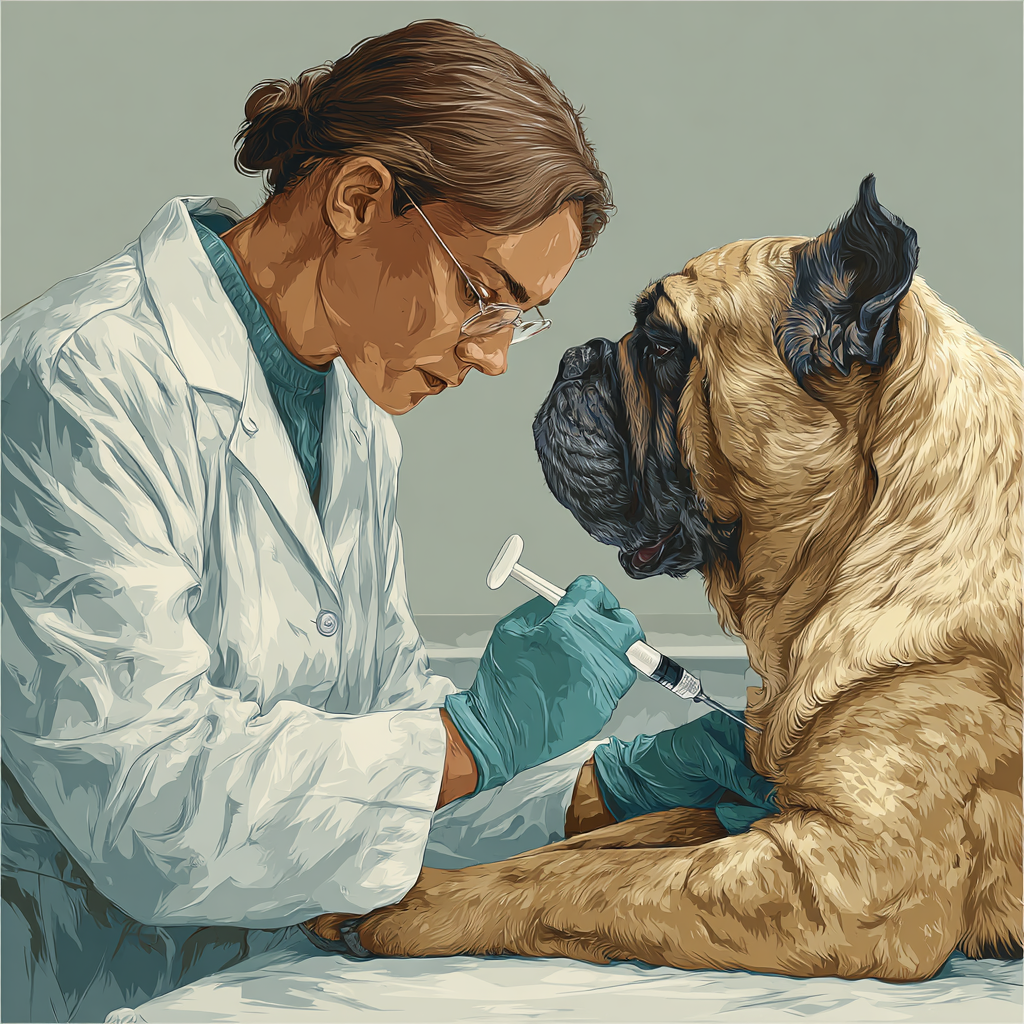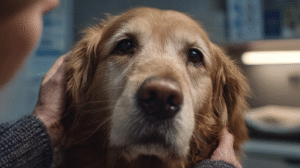How to Handle Lipomas in Dogs: Identification, Treatment, and Management of Fatty Tumors
If you are a dog owner, especially of an older or overweight dog, you may have encountered lipoma in dogs.
These are benign lumps of fat that can develop under the skin.
Lipomas in dogs are typically not dangerous, but their presence can be concerning for pet owners.
Although fatty tumors in dogs are generally not cancerous, their growth can affect your dog’s health.
In some cases, these lumps can grow large enough to cause discomfort or interfere with movement.
This guide will explain what you need to know about lipomas in dogs, how to treat them, and when surgical removal is necessary.
Additionally, we will explore natural remedies, such as how to shrink a dog lipoma naturally, and highlight how Vitaplus (Vidatox) might help manage these tumors.
Table of Contents
- What is Lipoma in Dogs?
- Causes of Lipomas in Dogs
- Symptoms of Lipomas in Dogs
- How to Shrink a Dog Lipoma Naturally
- Treatment for Lipomas in Dogs
- Using Vitaplus (Vidatox) for Tumor Management
- When to Consider Surgery for Lipomas
- Prevention Strategies for Lipomas
- Conclusion
What is Lipoma in Dogs?
A lipoma in dogs is a benign growth made of fatty tissue.
It usually appears under the skin.
These masses are soft, movable, and non-cancerous.
Most of the time, they do not cause any pain or discomfort for the dog.
Lipomas in dogs can occur at any age, but they are more common in older dogs.
They are also more likely to appear in overweight or obese dogs.
Despite being non-cancerous, fatty tumors in dogs can grow large over time.
When they grow, they might cause physical discomfort, especially if they press against nerves or other structures.
However, lipomas in dogs are generally not life-threatening.
They do not spread to other parts of the body or cause systemic issues.

Causes of Lipomas in Dogs
The exact cause of lipomas in dogs is still unclear.
Veterinarians suspect that both genetic and environmental factors play a role.
Some dog breeds are more prone to developing fatty tumors in dogs.
For instance, breeds like Labradors, Beagles, and Dobermans are more likely to develop these lumps.
The link between obesity and lipomas is well-established.
Overweight dogs have a higher risk of developing lipomas in dogs due to excess fatty tissue.
Hormonal imbalances or aging can also contribute to the growth of these tumors.
Exposure to toxins or environmental factors may also play a part in the development of lipomas.
Although most lipomas are benign, a small percentage can become malignant and transform into liposarcomas.
However, this is rare, and most lipomas in dogs do not become cancerous.

Symptoms of Lipomas in Dogs
Lipomas in dogs often appear as soft, movable lumps under the skin.
They are typically painless but can vary in size and texture.
Some lipomas feel firm, while others are squishy and can be easily manipulated.
In most cases, fatty tumors in dogs do not cause any noticeable symptoms unless they grow large.
If the lipoma presses against nerves or blood vessels, your dog might experience pain or discomfort.
In some instances, lipomas in dogs can grow large enough to interfere with movement.
A dog with a lipoma in a sensitive area may limp, avoid certain activities, or show signs of distress.
If a dog lipoma burst occurs, there could be sudden swelling, pain, or an infection.
This is more common if the lipoma is injured or becomes infected.
If you notice changes in your dog’s lump, such as increased size, hardness, or tenderness, consult your vet.
How to Shrink a Dog Lipoma Naturally
While there are no scientifically proven methods for shrinking lipomas in dogs naturally, some treatments may help.
Maintaining a healthy weight is essential for preventing and managing fatty tumors in dogs.
Excess fat in the body can lead to the development of more lipomas.
A well-balanced, low-fat diet can help manage your dog’s weight and prevent further growth of lipomas.
Some natural supplements, such as turmeric and fish oil, are believed to have anti-inflammatory properties.
These may help reduce the size of lipomas in some dogs.
Turmeric contains curcumin, which has antioxidant and anti-inflammatory effects.
Fish oil, rich in omega-3 fatty acids, may help reduce inflammation and support overall health.
Herbs like dandelion root and milk thistle have been suggested for their potential to support liver function and detoxification.
However, there is no solid scientific evidence proving that these remedies can shrink lipomas effectively.
Always consult with your veterinarian before starting any natural remedies.
Treatment for Lipomas in Dogs

Most lipomas in dogs do not require treatment, especially if they are not causing any issues.
However, if the lipoma is growing rapidly or causing discomfort, surgical removal may be necessary.
Surgery is the most common treatment for fatty tumors in dogs that need to be addressed.
During the surgery, the lipoma is removed under general anesthesia.
The procedure is generally safe and has a low risk of complications.
After surgery, most dogs recover quickly and experience minimal discomfort.
In some cases, the lipoma may grow back, especially if it is not completely removed.
For smaller lipomas, your veterinarian may recommend monitoring the growth rather than immediate surgery.
If the lipoma becomes infected, antibiotics may be prescribed to treat the infection.
Alternative therapies, such as laser therapy or acupuncture, may also be considered for some dogs.
Using Vitaplus (Vidatox) for Tumor Management
Vitaplus (Vidatox) is a natural supplement derived from the venom of the Cuban scorpion.
It has been suggested as a treatment for managing inflammation and supporting tumor reduction.
Some dog owners use Vitaplus (Vidatox) to help manage lipomas in dogs and other types of tumors.
This supplement is believed to have anti-inflammatory, immune-boosting, and tumor-regulating properties.
Vitaplus (Vidatox) is often used as an alternative or complementary treatment for pets with benign or malignant tumors.
Though some studies suggest potential benefits, there is no definitive scientific proof that Vitaplus (Vidatox) can shrink lipomas in dogs.
However, pet owners have reported positive effects, particularly in reducing swelling and discomfort.
When using Vitaplus (Vidatox) for a dog with lipomas, it’s important to consult with your veterinarian.
This ensures that the supplement does not interfere with any other medications or treatments.
If you are considering Vitaplus (Vidatox), it should be viewed as part of a holistic treatment plan that includes diet, exercise, and regular veterinary care.
When to Consider Surgery for Lipomas
Surgical removal of a lipoma in dogs may be necessary if the tumor is causing pain or growing rapidly.
If the lipoma is pressing against vital organs, nerves, or blood vessels, it may need to be surgically removed.
Surgery is often recommended when the lipoma interferes with your dog’s movement or comfort.
In rare cases, lipomas in dogs may become infected or injured, requiring surgical treatment to prevent further complications.
The decision to proceed with surgery depends on several factors, including the size, location, and behavior of the lipoma.
Your veterinarian will evaluate the tumor and determine whether surgical removal is the best option.
Post-surgery recovery is generally quick, but monitoring the site for signs of infection is important.
It’s crucial to follow your vet’s instructions for aftercare to ensure a smooth recovery.
Prevention Strategies for Lipomas
Although there is no guaranteed way to prevent lipomas in dogs, several strategies may reduce the risk.
Maintaining a healthy weight is one of the most effective prevention methods.
Obesity is a known risk factor for developing fatty tumors in dogs.
Regular exercise helps keep your dog’s weight in check and promotes overall health.
Providing a balanced, nutrient-rich diet can also support your dog’s health and prevent obesity.
Some supplements, such as omega-3 fatty acids, may help maintain healthy tissue and prevent inflammation.
While genetic factors can’t be controlled, healthy lifestyle choices can minimize the risk of lipomas.
Regular veterinary check-ups are important for early detection and monitoring of any growths.
Conclusion
Understanding lipoma in dogs is essential for maintaining your pet’s health.
While most lipomas in dogs are benign and non-cancerous, they can cause discomfort if they grow too large.
By recognizing the symptoms early and seeking treatment when necessary, you can help keep your dog comfortable.
Consulting your veterinarian is the best way to ensure that your dog’s lipomas are properly managed.
Natural remedies, such as Vitaplus (Vidatox), may help reduce inflammation and prevent further tumor growth.
Always consult with your veterinarian before starting any new treatment or supplement.
With the right care and attention, your dog can live a healthy and happy life despite lipomas.




